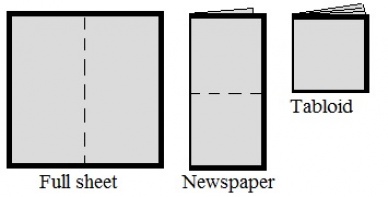Multiversity’s history column returns with a focus on the state of the comic book industry of 1932. Well, ok, there wasn’t much of a comic book industry in 1932, seeing as how the first modern comic book wasn’t published until 1933. But there was a comic strip industry, and in 1932 it was going through a metamorphosis, with its future shape unknown.
A struggling format
For 35 years, popular comic strips had been reprinted in book size collections with cardboard covers, but by 1932 that strategy had run its course. Having once sold well at fifty cents each, the new economic reality meant that even at half the price the reprints were bleeding sales. Publishers were faced with a hard decision: get out of the business, or get innovative. Two publishers chose the latter but went in different directions. Ironically, their names were Western Printing & Lithography and Eastern Color Printing Company.

The Western Printing & Lithography subsidiary Whitman Publishing changed the way the public thought of comics when they released their first “Big Little Book” (BLB). Measuring 3.5 inches by 4.5 inches, a BLB reprinted comic strips one panel per page with the accompanying dialogue or text on the facing page. For decades, newspaper syndicates had encouraged cartoonists to tell stories that ran for three months. That gave new subscribers a periodic jumping-on point, but it also gave Whitman a fairly standard page count with the majority running somewhere between 294 page and 314 pages. That regularity helped reduce Whitman printing costs.
Sold exclusively through five & dime stores (the 1930s equivalent of our dollar stores), the first BLB release was “The Adventures of Dick Tracy,” available to interested buyers for only a dime. The format was instantly popular, and the initial print runs for new titles were between 250,000 and 305,000 copies. At their peak in the 1940s, Whitman was releasing six new BLBs a month. Later releases expanded beyond comic strips to adapt novels and films.

The format continued to support new editions in large numbers through the 1960s. Although Whitman got out of the comic business in the 1980s, the BLB format lived on through other publishers. One of my earliest memories is reading a BLB of “Pilgrim’s Progress” circa 1990, although I didn’t know it was a BLB at the time. In 1998, Chronicle Books put out BLBs based on the popular Xena and Hercules television shows. Although the page count is drastically lower, you can still buy new BLB-styled books today that are designed for toddlers.

Like Western, the Eastern Color Printing Company retained the same old reprint content when they reinvented the comic package. Unlike Western, Eastern’s innovation was a minor change in the production method that had a big impact.
In 1932, newspapers were big business. In the era before radio was common, when television was still a dream, the only way to get your news was from the paper. Many cities had at least two local papers, and many of those papers had a morning and an evening edition. Consequently, newspaper printing was also big business, and that was Eastern Color’s primary source of income. The printing equipment was able to use only one size of paper. When folded in half once, the square paper became four pages of a newspaper. Folded in half again and trimmed to eliminate the first fold, it became an eight page tabloid.

Someone at Eastern Color, probably sales manager Harry Wildenberg, realized comic strips could be reduced in size to fit two on a tabloid page and still be readable. The resulting page could be folded in half again, producing a 16-page booklet that we’d recognize as modern comic book dimensions (or Golden Age comic book dimensions, anyway). After perfecting the new reduction process, Eastern Color offered a color comic supplement as a subscription premium for Philadelphia’s “Ledger” newspaper. No one thought it would be a commercial product; this comic book was just a way to keep the printing presses running because it was cheaper to give away some paper than to stop and restart the presses.
Continued belowThe success of BLBs and the popularity of the free giveaways led someone at Eastern Color – maybe Harry Wildenberg, maybe salesman Max Gaines or someone else – to experiment with a newsstand comic book priced at ten cents. But that’s a story for next year, when our history series gets to 1933.
The Birth of Fandom
In 1932, comic fandom didn’t exist. There were fans of comic strips, and some of them would clip their favorites and save them in scrapbook-like collections, but the available content was simultaneously so varied and had such broad appeal that there was no need for any kind of organization to find a like-minded soul. It would be like starting a “listening to music” club, or a “watching television” club. Everyone did it, so it was unremarkable.
You know what wasn’t commonplace, though? Science fiction. The genre was still fairly new, and it was niche. Some writers were better than others, and their work was in demand. Those same writers were being published in pulp magazines, which were ephemeral and therefore older ones were hard to find. All the ingredients for fandom were present.
Two boys, Mort Weisinger and Julius Schwartz, took the bold step of creating the first science fiction fanzine, “The Time Traveler.” In fact, theirs may have been the first fanzine of any kind. It was certainly the first fanzine with national distribution. Over time, the two used their fanzine to befriend their favorite writers, then used their clout to become writing agents. Eventually, both became editors at DC Comics and defined the way many us still think of the company’s staple characters. Beyond that, their example showed comic fans of the sixties how to organize, and Weisinger and Schwartz’s fond memories of their own fandom led them to nurture comic fandom when it was beginning.
Like this? Click here to see other articles in this series






